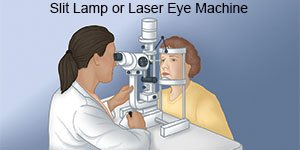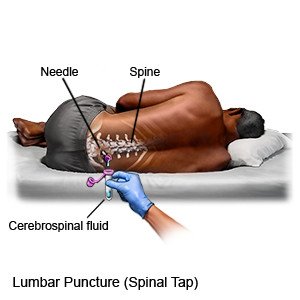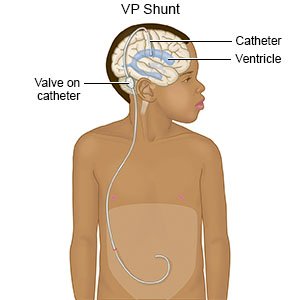Idiopathic Intracranial Hypertension
Medically reviewed by Drugs.com. Last updated on Apr 6, 2025.
What is idiopathic intracranial hypertension (IIH)?
IIH is a condition that causes the pressure inside your skull to be higher than normal for no known reason. IIH can seem like a brain tumor, but no tumor is found.
What causes IIH?
The cause may not be known. It may be caused by an increased amount of cerebrospinal fluid (CSF) in your skull. CSF is a clear fluid that surrounds the brain and spinal cord and protects them from injury. IIH may happen when your body makes too much CSF or does not absorb it correctly.
What increases my risk for IIH?
- Being female and of childbearing age
- Obesity
- Too much vitamin A or tyramine
- Certain medicines, such as steroids, tetracycline, or birth control pills
- Medical conditions, such as hypertension or sleep apnea
What are the signs and symptoms of IIH?
- Headache behind both eyes that is worse in the morning and with eye movement or straining
- Nausea, vomiting, or dizziness
- Pulsing or ringing in your ears
- Temporary blind spots in one or both eyes
- Blurred or double vision or loss of vision
- Trouble seeing with your peripheral vision (tunnel vision)
How is IIH diagnosed?
Your healthcare provider will ask about your health history and your symptoms. You may need any of the following tests:
- An eye exam is used to check for vision problems that may be a sign of IIH. Your healthcare provider will check your vision and examine your eyes. Your provider may dilate the pupil and use a microscope with a strong light to look into your eyes. A dye may be used to help blood vessels in your eyes show up better in pictures.

- A neurological exam is used to check how your pupils react to light. Healthcare providers may check your memory, your hand grasp, and your balance.
- CT or MRI pictures of your head may show fluid buildup and other problems. You may be given contrast liquid to help problems show up better in the pictures. Tell the healthcare provider if you have ever had an allergic reaction to contrast liquid. Do not enter the MRI room with anything metal. The MRI machine uses a powerful magnet. Metal can cause serious injury from the magnet. Tell the healthcare provider if you have any metal in or on your body.
- A lumbar puncture is a procedure to check the pressure inside your skull. A needle is inserted in your back and into the spinal canal. CSF may be collected and sent to a lab for tests. Healthcare providers may also drain CSF to relieve pressure and ease your headache.

How is IIH treated?
IIH may go away on its own. You may need any of the following if your symptoms continue or get worse:
- Medicines may be given to control migraines or decrease the amount of CSF you produce. This will help relieve pressure in your skull. You may need medicines to decrease extra fluid that collects in your body. You may also need pain medicine. Your healthcare provider may prescribe pain medicine or recommend an over-the-counter medicine such as an NSAID or acetaminophen.
- Surgery may be used to make a small opening in the sheath (cover) around the optic nerve. This allows extra CSF to drain and relieve eye pressure. Your healthcare provider may also use surgery to place a shunt (passageway) in your brain or spinal cord to drain extra CSF into another area of the body. This helps relieve pressure in your skull.

Treatment options
The following list of medications are related to or used in the treatment of this condition.
What can I do to manage IIH?
- Maintain a healthy weight. Ask your healthcare provider what a healthy weight is for you. Ask your provider to help you create a weight loss plan, if needed.
- Eat a variety of healthy foods. You may need to limit the amount of fats and salt you eat. You may also need to limit foods rich in vitamin A and tyramine. Foods rich in vitamin A include beef liver, sweet potatoes, carrots, tomatoes, and leafy greens. Food and drinks that are high in tyramine include cheese, pepperoni, salami, beer, and wine. Ask if you need to be on a special diet.

- Drink liquids as directed. Ask your healthcare provider how much liquid to drink each day and which liquids are best for you.
Call your local emergency number (911 in the US), or have someone call if:
- You suddenly cannot see.
- You have sudden neck pain or cannot move your arms or legs.
- You have sudden trouble breathing.
- You are confused or cannot think clearly.
When should I seek immediate care?
- You have a severe headache.
- You have a seizure.
When should I call my doctor?
- You have a fever.
- Your headache gets worse or does not go away with treatment.
- Your vision loss does not improve with treatment.
- You have questions or concerns about your condition or care.
Care Agreement
You have the right to help plan your care. Learn about your health condition and how it may be treated. Discuss treatment options with your healthcare providers to decide what care you want to receive. You always have the right to refuse treatment. The above information is an educational aid only. It is not intended as medical advice for individual conditions or treatments. Talk to your doctor, nurse or pharmacist before following any medical regimen to see if it is safe and effective for you.© Copyright Merative 2025 Information is for End User's use only and may not be sold, redistributed or otherwise used for commercial purposes.
Learn more about Idiopathic Intracranial Hypertension
Treatment options
Medicine.com guides (external)
Further information
Always consult your healthcare provider to ensure the information displayed on this page applies to your personal circumstances.
